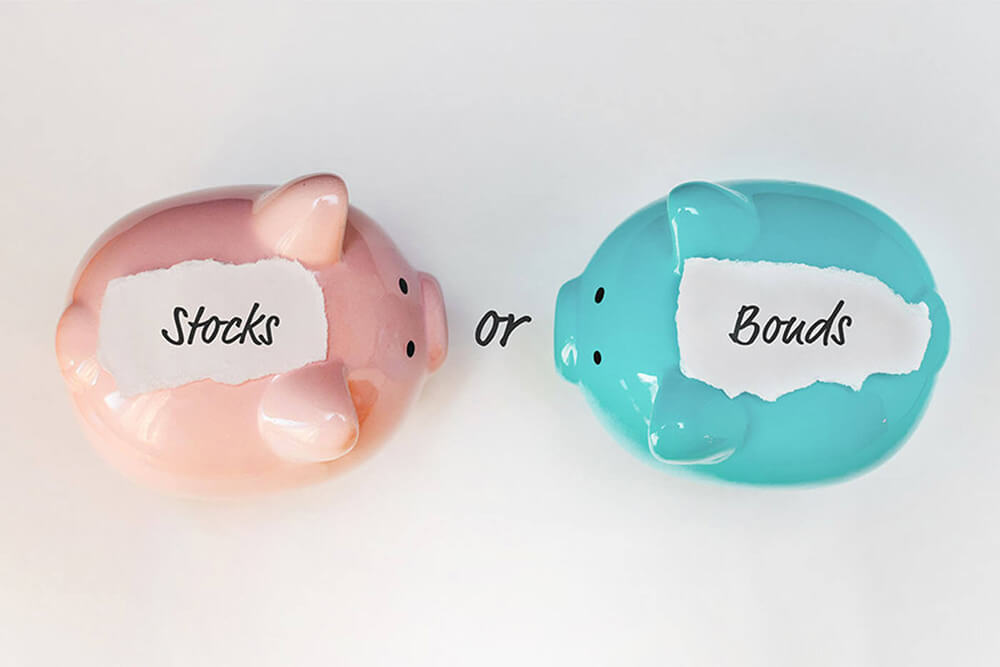The name
Here’s a quick primer on
- Bonds are a form of debt – basically a promise by a company or government to pay interest on a regular basis and, when held to maturity, return the original capital. (If the bond is sold prior to maturity, there may be a capital gain or loss depending on the market price of the bond at that time.) High-quality government bonds are safe, so the return tends to be low.
- Equities are a share in a business. They provide returns in the form of dividends, as well as capital gains. Theoretically, a stock price can rise into the stratosphere, but it can also go to zero. Stocks outperform bonds in the long term but there is no guarantee.
Conventional thinking says that a balanced portfolio with a mix of stocks and bonds has elements of both safety (bonds) and growth (equities). Like Jakob Fugger did, with age, we tend to shift more our assets to the safety of high-quality bonds.
In terms of how much to put into
Some financial experts
Still others say that our psychological disposition should be the determining factor. Treasury bond returns are low, but these bonds have close to zero-risk, which allows nervous investors to sleep at night. However, the hidden risk is, if returns fall below the rate of inflation, a retiree’s buying power is eroded over time.
What to do? Fortunately, there’s a new, holistic way to approach asset allocation that takes an important factor into account: human capital.
Human capital is our capacity to earn money based on our knowledge, skills, talent, and experience. A younger person has a much longer runway of earnings than a more mature person. But how we earn that income is
Some peoples’ earnings are more bond-like. Their salaries may not be sky-high, but the employment is secure, and they can expect small but regular annual increases. Even during a market downturn, the risk of job loss is very low. This could be a federal government worker or a tenured university professor.
On the other hand, people who work in the private sector, or who are self-employed or “giggers” have a variable income that is not as secure. Market cycles or even the whims of their bosses or clients can put their employment at risk. Their earnings are more like stock-like.
Should a senior federal employee and a self-employed consultant each have an identical asset mix? Finance academics would say no. Those with “bond-like” income can afford to take on more risk (i.e stocks), whereas those with a more precarious income should offset (“hedge”) their employment risk with bonds. This holistic approach should include the entire family. If both partners are tenured university professors, for example, they could afford to take on more investment risk than if they’re both circus acrobats.
Unfortunately, studies show that many families do not hedge their investments by diversifying their risk. One
Remember that a “balanced portfolio” is not always 60/40 or 50/50. By including your human capital into the equation, you may find that, for you, balance looks very different.
Rita Silvan, CIM™, is personal finance and investment writer and editor. She is the former editor-in-chief of ELLE Canada magazine and is an award-winning journalist and tv media personality. Rita is the editor-in-chief of
Golden Girl Finance , an online magazine focusing on women’s financial success. When not writing about all things financial, Rita explores Toronto’s parks with her standard poodle.
